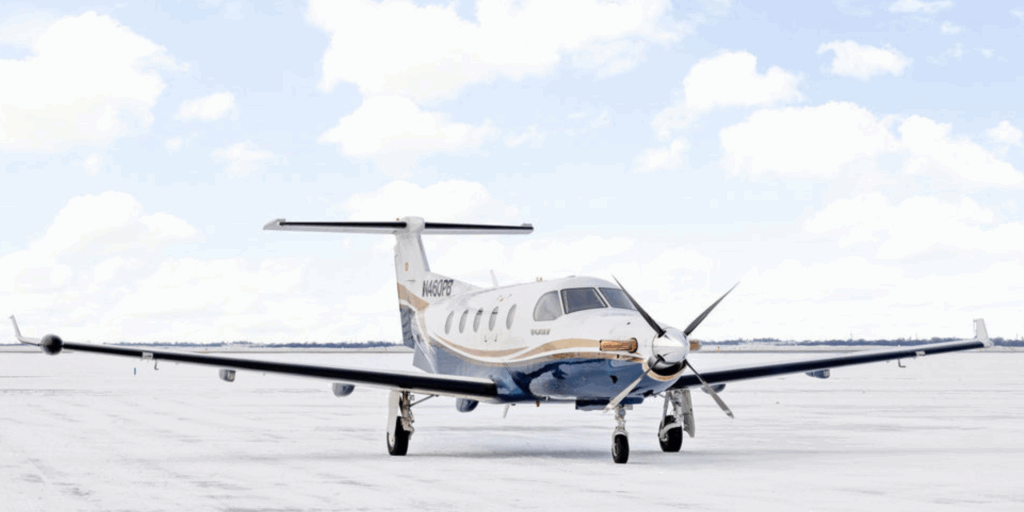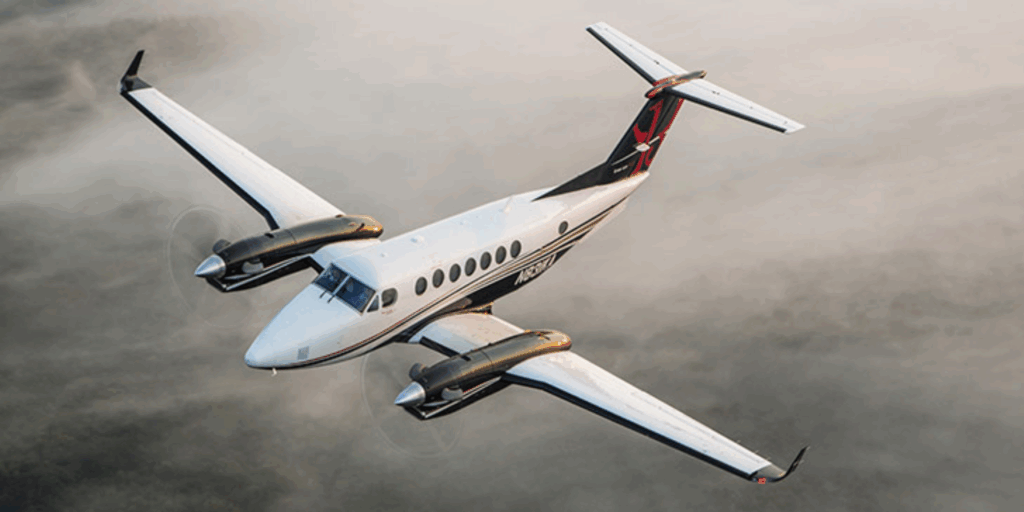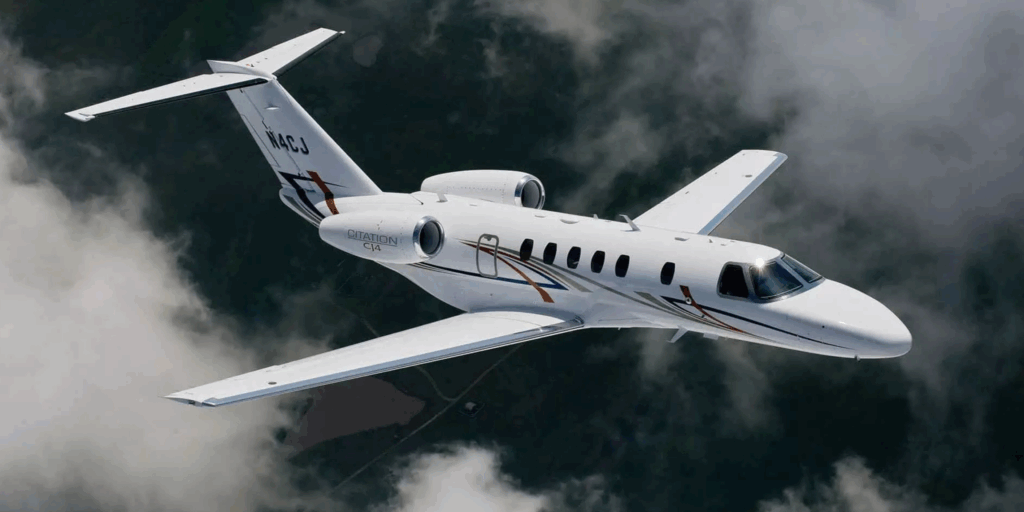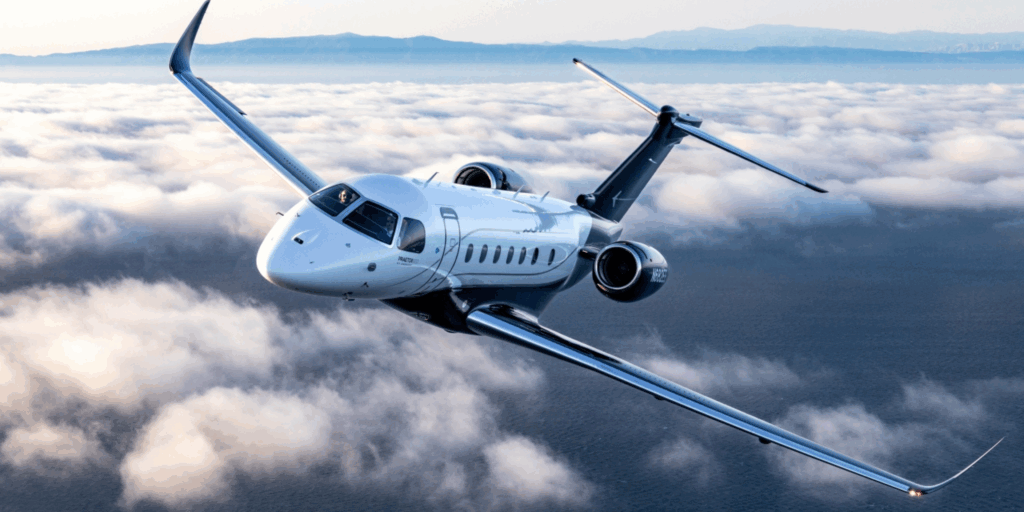When considering adding a business aircraft to your fleet, it is important to narrow down the many options according to your mission. The first way to do so is to determine from which aircraft category you should be choosing your aircraft. Turboprop, twin turboprop, light jet, mid-size jet, super mid-size jet, and large jets are all different aircraft categories that fit a unique mission profile.

TURBO
Turboprop aircraft are generally considered the most efficient business aircraft option, with the lowest fuel consumption per hour and often the best bang for your buck. They utilize a single turbine engine that drives a propeller. Some commonly known examples include the Pilatus PC-12, Cessna Caravan, and TBM series.
Typical Use: Cargo, regional flights, short range business travel
Pros: lower operating costs, increased fuel economy, increased takeoff and landing performance
Cons: Slower cruising speeds, lower range, increased cabin noise.

TWIN TURBO
Twin turboprop aircraft are similar to turboprop aircraft, but instead use two turbine engine driven propellers rather than one. They are often chosen for the increased redundancy and increased cabin comfort over the single engine turboprop aircraft. These aircraft often compete with light and midsize jets, and are hailed for their fuel economy and ability to carry a greater useful load into smaller runways. Commonly known examples are the Beechcraft King Air series, Piaggio Avanti, and Piper Cheyenne series.
Typical Use: Short-range Business travel, medivac, cargo
Pros: Increase redundancy, greater range, lower fuel economy compared to light and mid jet competition
Cons: Slower than Business Jets, higher cabin noise

LIGHT JETS
Light jets are the smallest category of business jets, often utilized for short range flights. Generally seating anywhere between 4-8 passengers, they are the better choice for businesses operating short flights regionally (~ 500 nm). They are generally praised for their fuel economy and ability to fly into short runaways. Common examples are Cessna Citation CJ series, Embraer Phenom Series, and HondaJets.
Typical Use: Short-range business trips
Pros: Much faster than most twin turboprops, more fuel efficient than midsize jets.
Cons: Limited Cabin Space, shorter range

MID-SIZE
Mid-Size Jets are one step up from a light jet. Focused on providing versatility and comfort, mid-size jets generally sport larger cabins and increased range. However, size comes at a price, meaning acquisition and operating costs will be greater than that of a light jet. Common examples of Mid-Size Jets are the Citation XLS+, Gulfstream G150, and Hawker 800XP.
Typical Use: Medium Length Trips (500-1000 nm)
Pros: Increased cabin comfort, range
Cons: Higher operating costs than Light jets, turboprops

SUPER-MID
Super-mid aircraft make the jump into trans-continental travel, allowing 8-12 people to easily fly coast to coast and in some cases fly from North America to Europe. These aircraft are fast, long range options while keeping operating costs just higher than that of a mid-size jet. Common examples include the Embraer Praetor 600, Gulfstream G280, and Citation Longitude.
Typical Use: 2000+ nm trips, 8+ passengers
Pros: Increase cruise speed, range, and cabin comfort
Cons: High Acquisition and Operating costs

LARGE/HEAVY JETS
Large Jets are the pinnacle of private aviation. These aircraft have cabins that are separated into multiple different spaces, including sleeping quarters. Range almost always exceeds 4000 nautical miles and can often approach 7000 nautical miles, and cruise speeds often near the speed of sound. Common Examples are the Global 7500, Gulfstream G700, and Falcon 8X.
Typical Use: International and transoceanic flights, corporate executives
Pros: Maximum comfort, range, and speed capabilities
Cons: Very High acquisition and operating costs
With hundreds of models, deciding the right aircraft for one’s mission can be a daunting task.
Not sure which of these categories makes sense for your business? Contact the professionals at Holstein Aviation today to set up a no-cost consultation. CLICK HERE to submit an inquiry.